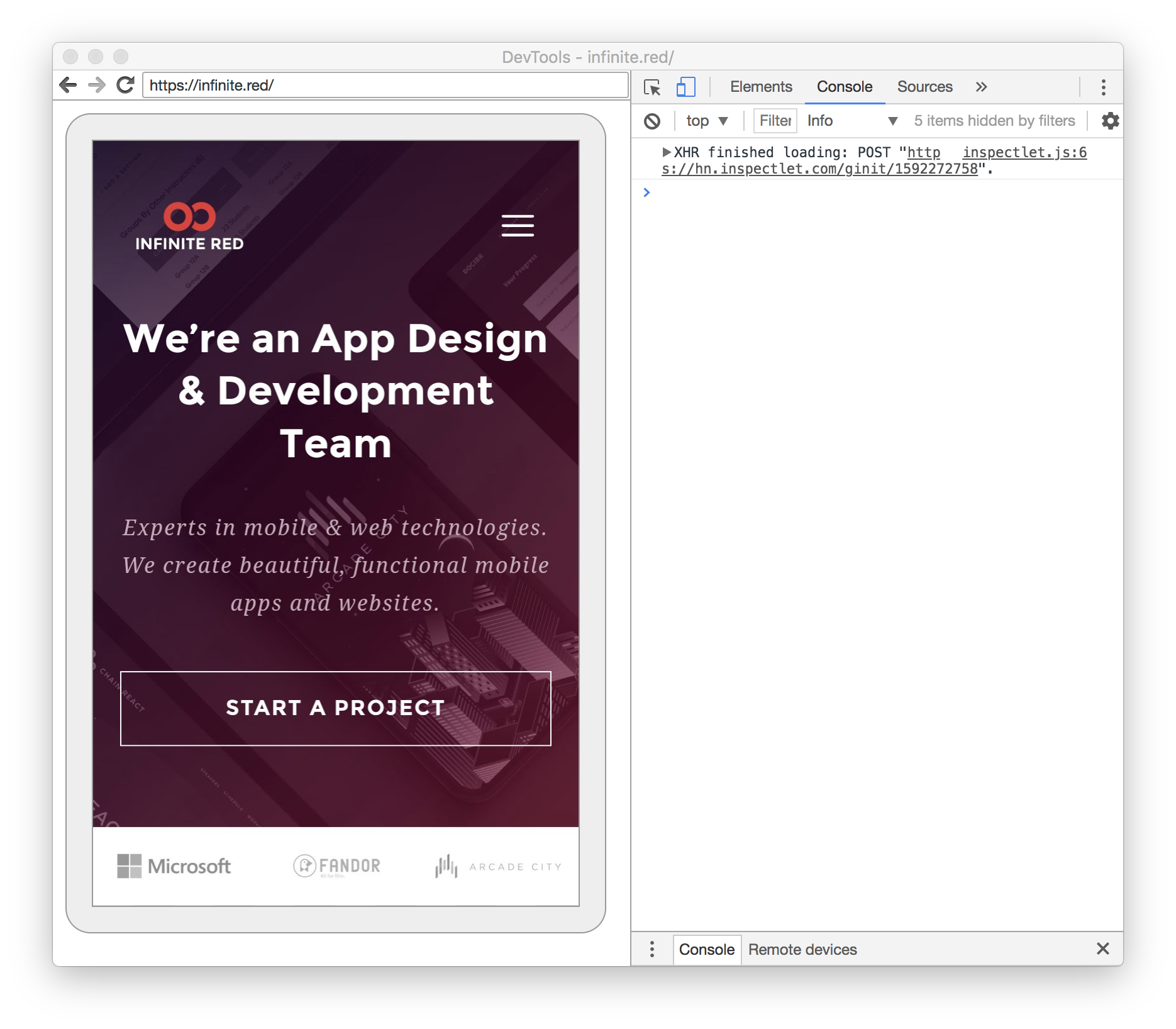96 lines
3.0 KiB
Markdown
96 lines
3.0 KiB
Markdown
# React Native WebView Debugging Guide
|
|
|
|
Here are some helpful React Native WebView debugging tips.
|
|
|
|
## Script Errors
|
|
|
|
It can be difficult to debug syntax errors and other script errors in WebView, since errors don't show up in a console by default.
|
|
|
|
One option (if you're loading HTML from an external source) is to inject an error handler before the content is loaded.
|
|
|
|
```js
|
|
<WebView
|
|
injectedJavaScriptBeforeContentLoaded={`
|
|
window.onerror = function(message, sourcefile, lineno, colno, error) {
|
|
alert("Message: " + message + " - Source: " + sourcefile + " Line: " + lineno + ":" + colno);
|
|
return true;
|
|
};
|
|
true;
|
|
`}
|
|
source={{
|
|
uri:
|
|
'https://bl.ocks.org/jamonholmgren/raw/48423fd99537283beace1daa2688e80f/',
|
|
}}
|
|
/>
|
|
```
|
|
|
|
This will provide an Alert box with (hopefully) useful debugging information.
|
|
|
|
If you're injecting JavaScript, this may fail with `Script error` and no other useful information. One simple way to debug this is to wrap your injected JavaScript in a try/catch, like so:
|
|
|
|
```js
|
|
const js = `
|
|
try {
|
|
// your code here
|
|
} catch(e) {
|
|
alert(e)
|
|
}
|
|
true;
|
|
`;
|
|
```
|
|
|
|
This will bring up an alert with the error message, which may or may not be helpful.
|
|
|
|
If these two simple methods fail to uncover the bug, try using the next technique!
|
|
|
|
## Debugging WebView Contents
|
|
|
|
### iOS & Safari
|
|
|
|
It's possible to debug WebView contents in the iOS simulator or on a device using Safari Developer Toolkit.
|
|
|
|
#### Steps:
|
|
|
|
1. Open Safari Preferences -> "Advanced" tab -> enable checkbox "Show Develop menu in menu bar"
|
|
2. Start app with React Native WebView in iOS simulator or iOS device
|
|
3. Safari -> Develop -> [device name] -> [app name] -> [url - title]
|
|
4. You can now debug the WebView contents just as you would on the web
|
|
|
|
##### Notes:
|
|
|
|
When debugging on device you must enable Web Inspector in your device settings:
|
|
|
|
Settings -> Safari -> Advanced -> Web Inspector
|
|
|
|
Also, if you don't see your device in the Develop menu, and you started Safari before you started your simulator, try restarting Safari.
|
|
|
|
### Android & Chrome
|
|
|
|
It's possible to debug WebView contents in the Android emulator or on a device using Chrome DevTools.
|
|
|
|
1. You will need to make the following change to `MainApplication.java` to enabled web contents debugging:
|
|
|
|
```java
|
|
import android.webkit.WebView;
|
|
|
|
@Override
|
|
public void onCreate() {
|
|
super.onCreate();
|
|
...
|
|
WebView.setWebContentsDebuggingEnabled(true);
|
|
}
|
|
```
|
|
|
|
2. Start app with React Native WebView in Android emulator or Android device
|
|
3. Chrome -> DevTools -> Menu (3 dots) -> More tools -> Remote devices
|
|
4. Select your device on the left and select "Inspect" on the WebView contents you'd like to inspect
|
|
5. You can now debug the WebView contents just as you would on the web
|
|
|
|

|
|
|
|
##### Note:
|
|
|
|
When debugging on device you must enable USB debugging in your device settings:
|
|
|
|
Settings -> System -> About Phone -> Developer options -> enable USB debugging
|